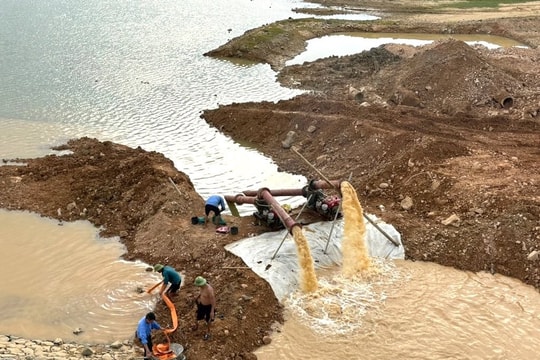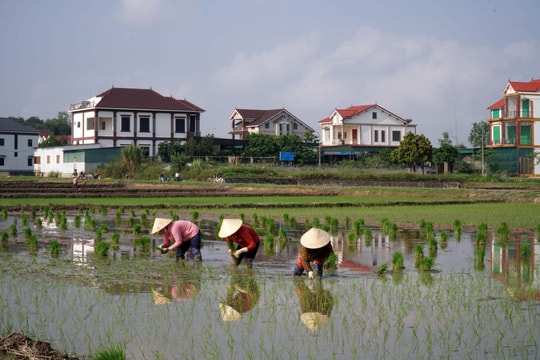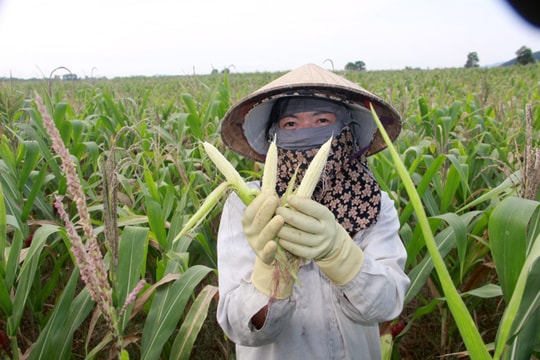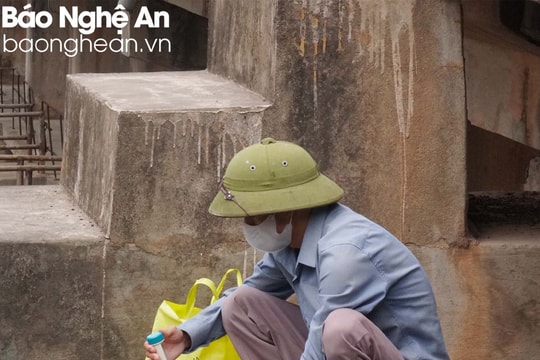People in the West are suffering the most serious drought and saltwater intrusion ever.
 |
| The rainy season ended early, the flow of the Mekong River upstream was at its lowest in 90 years, causing saltwater intrusion to appear early in more than a dozen provinces in the Mekong Delta (MD). Dong Thap and Can Tho have not been attacked by saltwater, but have been ravaged by drought. It is forecasted that severe natural disasters will last for a long time, with the risk of 500,000 hectares of summer-autumn rice not being able to be planted, seriously affecting the lives of one million households (equivalent to 5 million people). "With the current developments, we are experiencing a historic natural disaster," said Minister of Agriculture Cao Duc Phat. |
 |
| Ms. Pham Thi Tiet (80 years old, in Phu Thanh commune, Tan Phu Dong district, Tien Giang province) said: "6 hectares of winter-spring rice of her family were lost. Up to now, people here have never witnessed such high salt water and severe drought like this." Currently, Tien Giang has more than 1,000 hectares of winter-spring rice of the people lost. Localities in the province installed 674 2-level and 3-level pumping points to provide irrigation water for nearly 22,000 hectares of rice. |
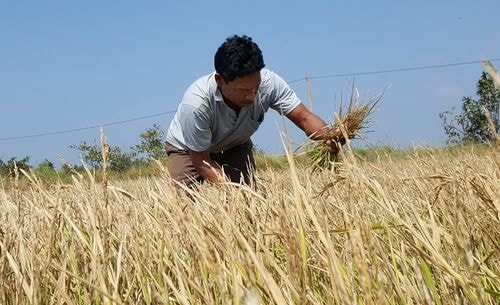 |
| In the Mien Thu region of Kien Giang province, many farmers planted winter-spring rice but only harvested empty rice. Mr. Danh Ca (42 years old, An Bien district) sighed and said: "The saltwater flooded in so strongly this year, we couldn't handle it. Seeing the rice fields slowly dying was heartbreaking." |
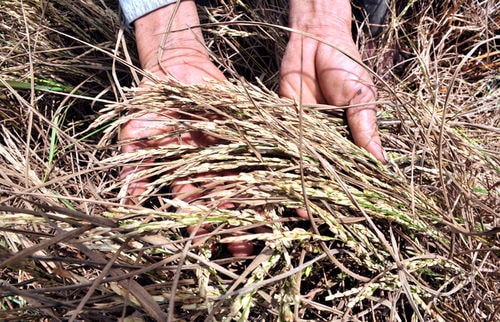 |
| To date, Kien Giang has more than 55,000 hectares of rice damaged. To protect the remaining rice area, the government urgently built 89 temporary dams to prevent salinity and retain fresh water; at the same time, it drilled underground water with a capacity of 20,000 m3 per day and night to serve the people. |
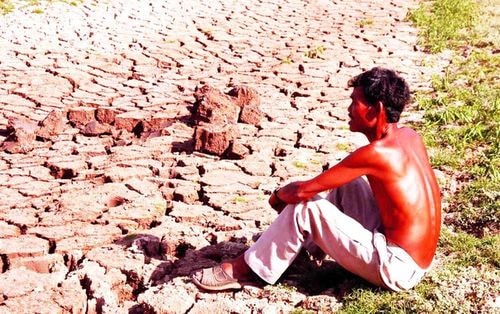 |
| Similarly, Soc Trang has 12,800 hectares of rice in the districts of Tran De, Long Phu, Ke Sach, Chau Thanh, My Xuyen but has been damaged by over 70%, causing a loss of over 30 billion VND to farmers. In the photo, Mr. Thach Thanh (42 years old) in the area heavily affected by saltwater intrusion in My Xuyen district, Soc Trang province, is absent-mindedly standing next to the dry, cracked field. "I feel helpless in the burning sun. I can't work on the fields, in recent weeks many people here have gone to the East to work for a living, waiting for the rain to come back," he said. |
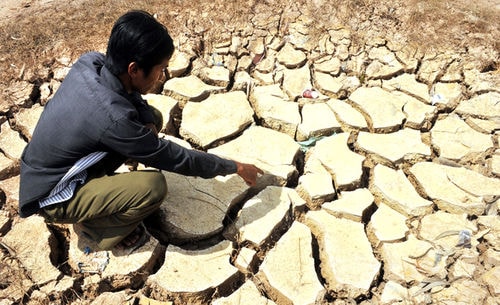 |
| The canals in the Long Xuyen quadrangle have been cracked due to the severe drought of the past months. Before that, the last drops of water were pumped into the fields by the people to save the rice. |
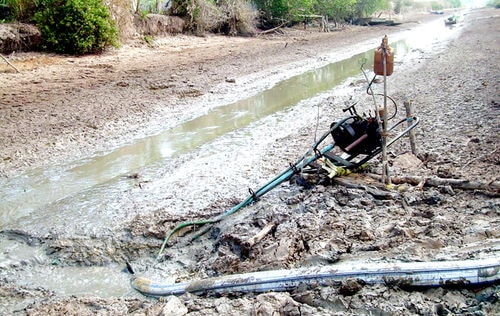 |
| Many canals in the Ca Mau peninsula have dried up. Currently, people are trying to scoop up every last drop of water in the hope of saving their rice. |
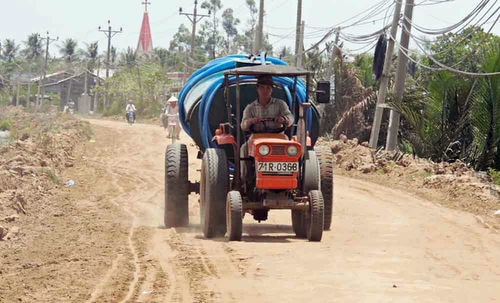 |
| The provinces of Tien Giang, Ben Tre, Long An, Ca Mau, Soc Trang and Kien Giang have declared a state of natural disaster. Secretary of the Ben Tre Provincial Party Committee Vo Thanh Hao said that only 4 out of 164 communes and wards have not been attacked by saltwater; offices, schools, hospitals and industrial zones are all seriously lacking fresh water. People have to buy water for daily use at 40,000 - 70,000 VND per cubic meter. |
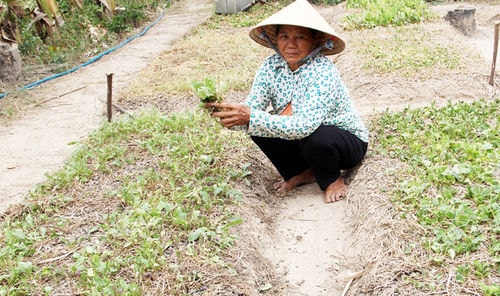 |
| Drought has caused the coastal crop growing sand dunes in the West to almost disappear due to lack of fresh water for irrigation. Mr. Nguyen Thanh Lam - Deputy Head of the Department of Agriculture of Ba Tri District (Ben Tre) worried: "The loss of rice has been a great suffering for the people. Now vegetables and fruit trees are also withering day by day. The rich who have land for production have suffered damage leading to no income, while the poor have no one to hire them, they do not know how to live." |
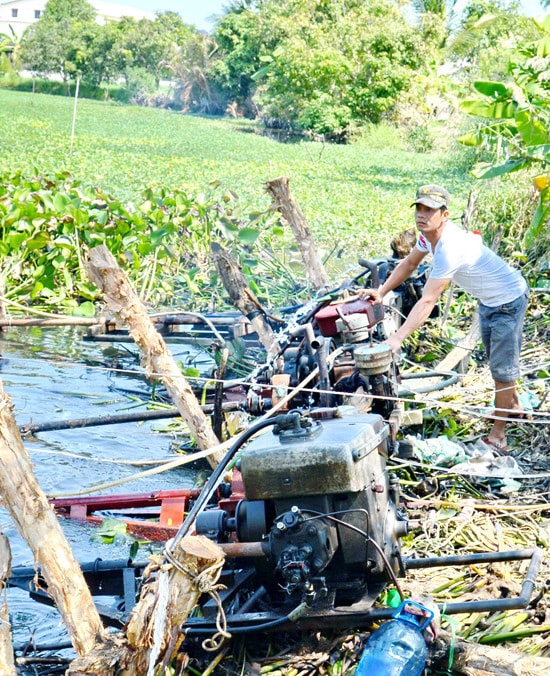 |
| Meanwhile, in the Go Cong peninsula (Tien Giang), the remaining freshwater ponds and lakes are very valuable and are being fully utilized by people to pump into their fields to save rice crops. |
 |
| The irrigation system in the Mekong Delta is not yet complete and is overloaded by this historic natural disaster. The entire region needs 32,500 billion VND to carry out urgent projects to respond to climate change. Of this, 1,060 billion VND is urgently needed for localities to carry out the most urgent projects to prevent salinity and retain fresh water for people's lives and production. |
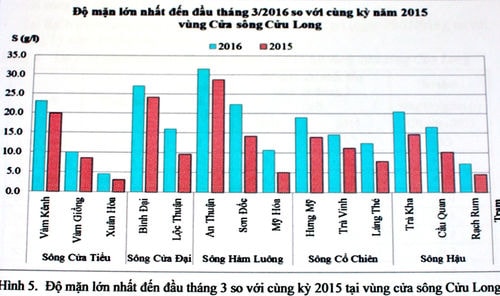 |
| In the areas of Vam Co River, Tien River, Hau River, and the West Coast; saltwater penetrated 45-93km inland; in many places the highest salinity reached 20.3-31.5g/l. Minister of Agriculture Cao Duc Phat said: "This has never happened in the history of saltwater intrusion monitoring". |
According to VNE














